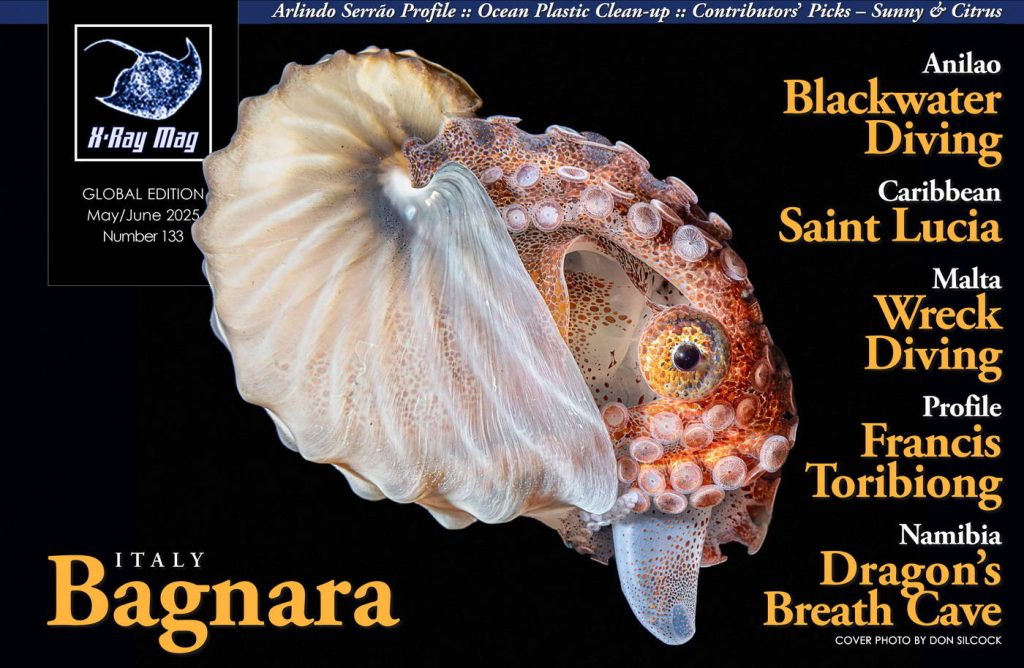It really is an unusual way to spend an evening — less of a night dive and more of a nocturnal sojourn into another world.
This is Anilao blackwater diving, where you descend into the dark waters of Balayan Bay to witness creatures few divers ever see.
Beneath you lies deep water. Around you, apart from the faint glow of the downline lights, there is complete, absolute darkness.
Somewhere out there, drifting in the black, are some of the ocean’s most photogenic and mysterious blackwater creatures.
Most are small, some are tiny, and all are elusive.
First, you must spot them. Then frame them in your viewfinder, lock onto the eye, press the shutter while adjusting exposure on the fly and maintaining neutral buoyancy, tracking your depth, gas, and NDL…
And, crucially, not losing sight of the downline.
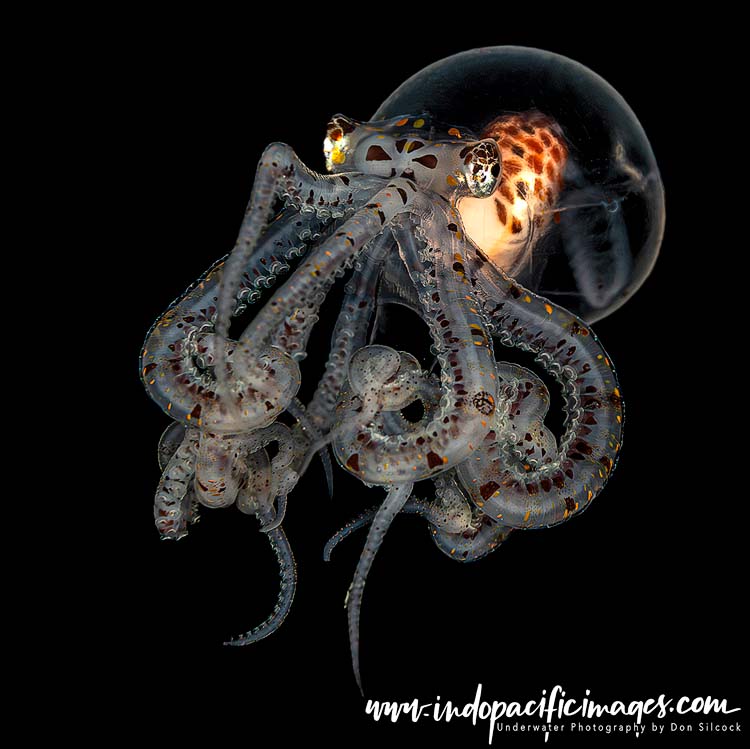
Then, of course, there’s that nagging thought – what else is out there, lurking in the Stephen King darkness? Like I said, an unusual evening’s entertainment by anybody’s standards, but this is blackwater diving in Anilao.
Season I – The First Anilao Night Shift
In late January 2024, I travelled to Anilao, Philippines, for the first time with two goals in mind: to explore the area’s renowned macro life, and to experience what has become universally known as blackwater diving.
I stayed at Crystal Blue Resort, run by Mike Bartick — one of the most influential advocates of this unique type of diving. His remarkable imagery and in-depth articles have probably done more than anyone to popularise the blackwater experience.
For the first five days, I focused on daylight macro photography and quickly discovered why Anilao Philippines diving has earned such a global reputation. The sheer variety of critters across a wide range of sites is astonishing — a macro paradise for underwater photographers.
After five days of daylight shooting, it was time to venture into the dark. That evening, I set out for my first two blackwater dives — and calling them “different” turned out to be a serious understatement.
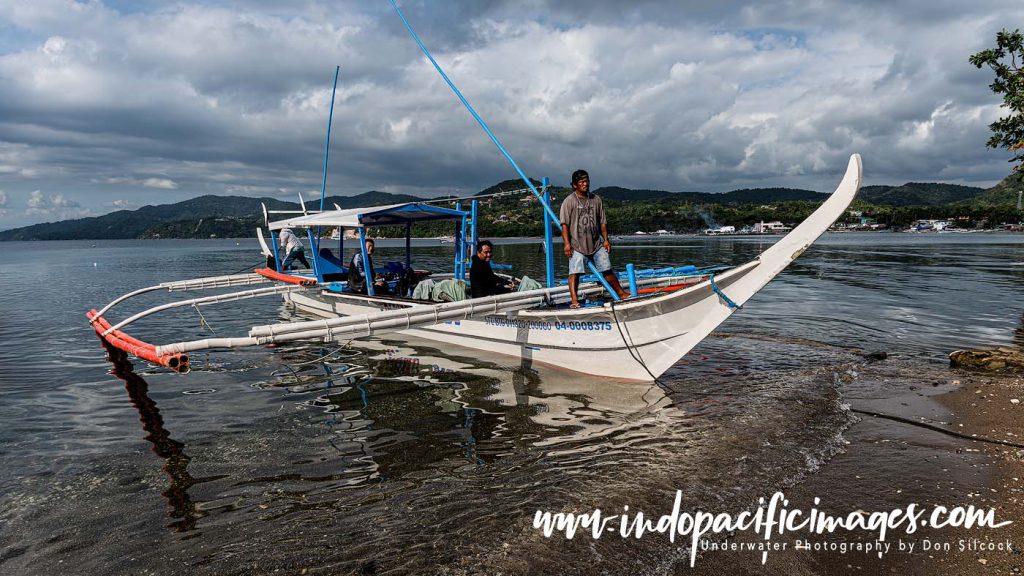
What Makes Anilao Blackwater Diving So Special
Every night, something extraordinary happens beneath the surface — a natural phenomenon known as Diel Vertical Migration (DVM). It is the largest synchronized movement of organisms on the planet, occurring across every ocean, yet few people even know it exists.
Tiny animals – primarily zooplankton such as shrimp, jellies, larval fish, and the juvenile stages of larger creatures – rise from the deep to feed on phytoplankton in the surface layers of the ocean. As the sun disappears, billions ascend into the night.
In Balayan Bay, this nightly migration reaches extraordinary intensity. The bay covers nearly 500 km² and lies at the southwest tip of Luzon, the Philippines’ largest island.
The nutrient-rich waters sweeping in from the Verde Island Passage create powerful eddies that circulate throughout the bay, nurturing a diversity of life unmatched in most other places.
The steep walls of the bay drop past 100m and on to depths of 300m, creating a perfect stage for the nightly ascent of these delicate drifters — and the ideal arena for blackwater photographers.
It is this combination of deep water, nutrients, and proximity that makes Anilao blackwater diving so extraordinary.
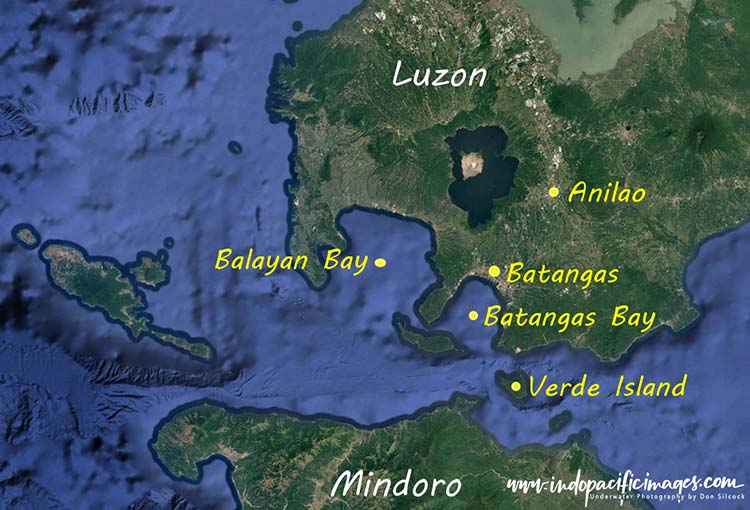
Anilao Blackwater Diving – The Night Shift Routine
On that first trip, I did two blackwater dives each night for seven nights. The boats departed from Crystal Bay at 19:00, heading north for about an hour before the crew deployed the downline and video lights. Each dive lasted about an hour, followed by a surface interval on the boat before descending again. By the time we returned to shore, it was well after midnight — hence my nickname for the whole experience: “The Anilao Night Shift.”
It took me three nights to get truly comfortable with what we were doing underwater. Everything felt more complex than a typical night dive – not just the darkness, but the sense of isolation. My primal fear of losing the downline was never far away.
Photographically, it was also a challenge. The combination of zooplankton and phytoplankton meant that backscatter was a major issue. It took until the fourth night to refine my lighting and exposure setup, and even then, reflective subjects forced constant adjustment. Encounters are brief, unpredictable, and dynamic… there’s little time to get it right.
But by the seventh night, three things were clear: blackwater diving is exhilarating, the photographic potential is immense, and I would be returning to Anilao for more.
Season II – Back to Balayan Bay
I planned my second trip in January 2025, timing it carefully around the new moon, when blackwater conditions are at their best. This time, I travelled with my Italian dive buddies — Filippo Borghi, an accomplished underwater photographer, and Davide Mottola, a tech/CCR instructor and videographer.
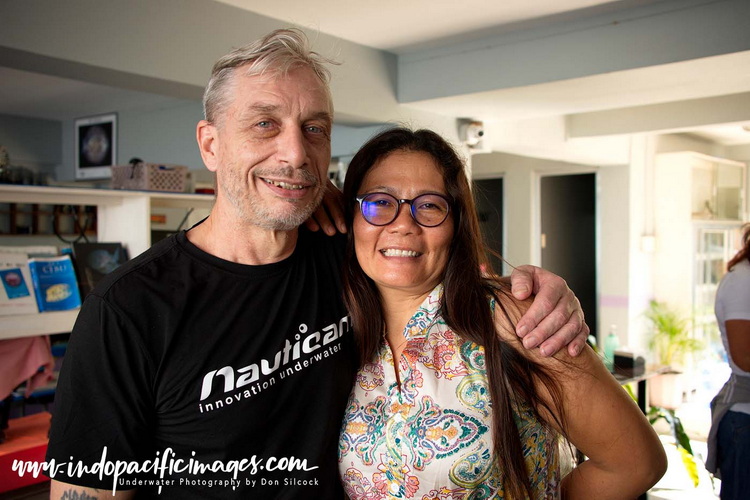
We based ourselves at Anilao Photo Academy (APA), located right on the waterfront near the port in downtown Anilao.
Filippo and Davide chose to dive mornings and nights, while I focused solely on the blackwater dives, sleeping in each morning to stay fresh for the night shift.
To our surprise, our first evening dive was barely five minutes by boat — a welcome change from the long commutes of Season I.
APA is situated directly in front of the primary Anilao blackwater diving zone, meaning surface intervals were spent back on land, enjoying a hot dinner and tea before descending again.
The operation, run by Australian Wayne “Jones” Jones and his Filipina wife Rina Yumol Jones, was superbly organized yet wonderfully relaxed. Both are talented photographers who create an environment where learning and creativity come naturally — and eating dinner in a wetsuit during a surface interval felt like a strange but very welcome luxury.
Lessons Learned and Refined
As with everything, repetition builds confidence. By Season II, I knew what to expect — how to set up my rig, what lenses worked best, and how to anticipate the kinds of blackwater creatures likely to appear. On my first trip, I used a 7mm semi-dry suit, which proved adequate but cold on the second dive. This time, I added a heated vest and it made all the difference.
Armed with experience, preparation, and fine-tuned gear, I was able to capture strong images from the very first night, and over the next eight “night shifts,” it only got better.
Finding new subjects underwater is always exciting, but when those subjects are larval and juvenile creatures rising from the depths, it feels like peering into another world. Once the fundamentals of buoyancy, lighting, and focus are mastered, blackwater photography in Anilao truly opens a window into a hidden universe.
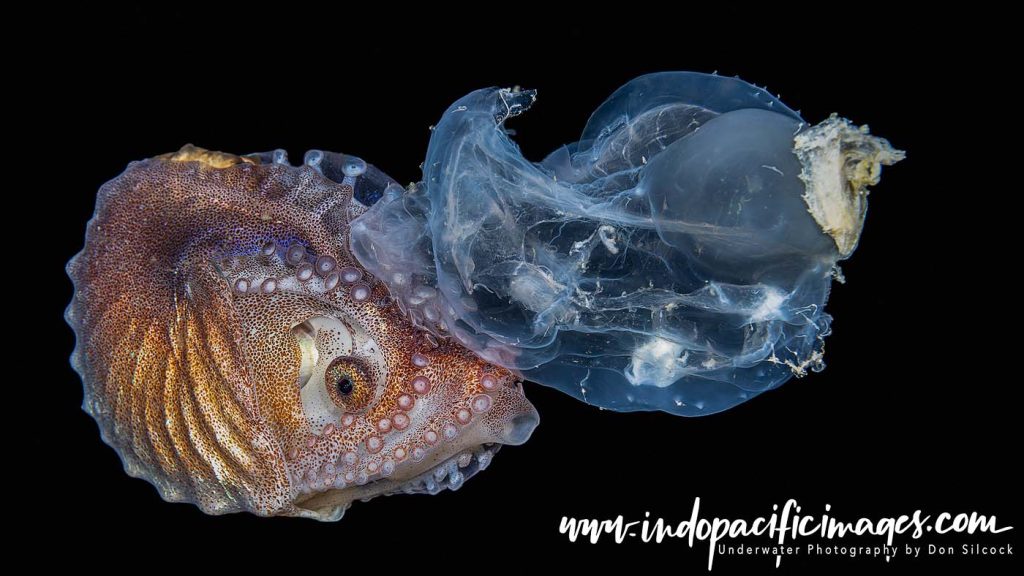
Anilao Blackwater Diving – The Broader Picture
Although the name Anilao technically refers to a small village on Luzon’s Calumpan Peninsula, divers use it as shorthand for the entire region stretching along its 13km rocky coastline. To the west lies Balayan Bay, and to the east, the smaller Batangas Bay. Both bays host excellent macro sites, but Balayan Bay is the undisputed heart of Anilao’s blackwater action.
The region’s dive season traditionally runs from late October through May, avoiding the typhoon months, although recent years have seen it extend through June. Blackwater diving in Anilao is productive throughout the season, but conditions fluctuate with the tides and moon phase — making the new moon the most reliable time to go.
Located just three hours’ drive south of Manila, Anilao is easy to reach yet feels far removed from the capital’s chaos. Most dive resorts, including APA and Crystal Blue, arrange transfers directly from the airport, making logistics simple.
In Summary – A Late Convert
The waters around the southwestern tip of Luzon are rich, deep, and full of surprises. The nutrient flow through the Verde Island Passage sustains a tapestry of marine life that makes Anilao diving exceptional – from world-class macro sites to the mesmerizing experience of blackwater diving.
I was drawn to Anilao by curiosity, but like most late converts, I’ve become an enthusiast. There’s something about the mix of mystery, technical challenge, and surreal beauty that gets under your skin.
And so, plans are already forming for Season III — more blackwater dives, and this time, a proper exploration of Anilao’s daylight macro and wide-angle opportunities.
Watch this space…
Anilao Blackwater Diving – X-Ray Article
The excellent global diving magazine X-Ray just published a six-page article of mine on the Anilao Night Shift (which also got me the front cover…) and you can use the link to download a copy from their site.
